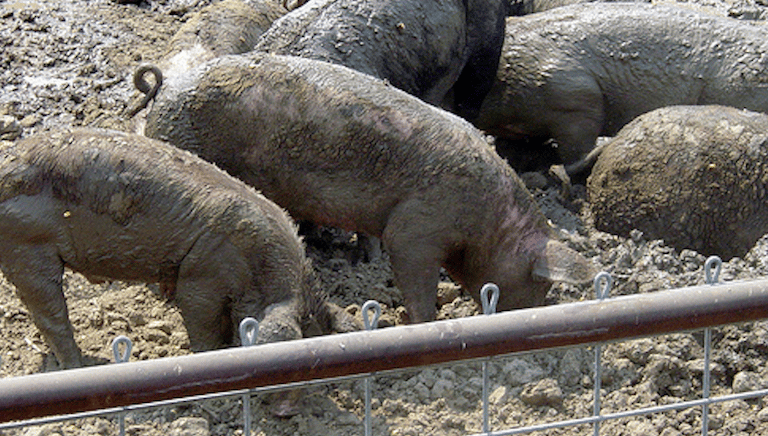What is the turning point?

Where’s the turning point in the parable of the two sons?
Is it the moment when the young rebel ‘comes to himself’ in the pig-sty?
That’s certainly the way the story gets preached. But let’s think about this for a minute. If the pig sty is the turning point, then how will we preach the ‘moral of the story’? With this emphasis the parable is all about looking around, understanding the wretchedness of the sty, weighing things up and choosing obedience.
What’s wrong with that? Well for one it effectively makes the prodigal his own saviour. It leads to preaching that follows this all-too-familiar pattern:
Life can be great in the far country can’t it?
But the money always runs out, doesn’t it?
The pig sty is pretty horrible.
Maybe now is the time to come to your senses.
Here – here’s a sorry spiel you can use. Practise it. The words are magic and will guarantee your acceptance from the Father… Let’s pray.
Such preaching is rife but it doesn’t focus us where we need to be focused.
Let’s ask the question, what is the turning point of this story? I’m not so much talking about literary devices. I’m asking the question, What is the point that determines the prodigal’s fate? What is the decisive moment for his life? Is it ‘coming to himself’ in the sty?
No. Of course not. He could have devised the greatest repentance plan known to man and still been rightly shunned by his father. The true turning point was the father’s embrace.

The real change in the prodigal – both his change of status and of heart – happens in the arms of the father. That’s where repentance occurs.
Imagine yourself in those arms. You may have been sorry before but now you loathe yourself… and yet… you cannot escape his love. You’d thought you stank in the sty, now you feel your stench to the core. Yet you are held close. You had composed a repentance speech. Now the awareness of your sin is overwhelming. But you’re enfolded in grace.
This is true repentance – that which occurs in the Father’s embrace. And this is where our ongoing repentance occurs.
When we sin, do we consider ourselves to be in the pig sty – the long journey home stretches ahead of us? Or do we consider ourselves to be already in the Father’s arms? There’s a big difference.
I remember speaking with a Christian man about his extra-marital affair from years earlier. As he spoke about the pain of those memories I said to him “You realise that in the midst of your worst sins, Jesus was rejoicing over you as a Bridegroom rejoices over His bride.” He paused for a long time and said “That makes it a hundred times worse!” I said “Yes it does. A thousand times worse.” We think that we manage to sin away in a corner somewhere. No, no, no. Just read 1 Corinthians 6:15-20 to see that we are very much united to Christ in our sin!
We stink of pig in the Father’s arms. That’s a thousand times worse than stinking in the sty. But it’s a million times better too.
Next week, we’ll consider what it sounds like to preach this way, but for now let’s feel the wonder of the Father’s arms. The place for our turning – at the beginning and throughout our Christian lives – is His unchanging embrace. When you sin, don’t imagine yourself alone in the sty. You are there in His arms – reeking and held fast. It’s a thousand times worse. A million times better.
